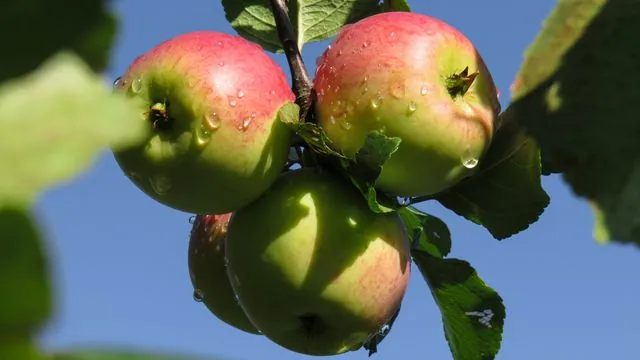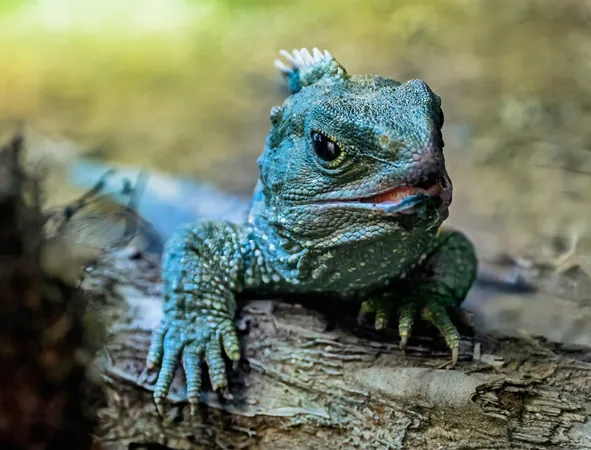
Unlocking the Secrets of Apples: A Genetic Family Tree Revealed!
2025-04-24
Author: Arjun
New Research Uncovers Apple Ancestry
A groundbreaking study has unveiled the intricate family tree of apples, revealing the evolutionary journey of the Malus genus, which includes both cultivated apples and their wild relatives. This extensive analysis spans nearly 60 million years, showcasing how apple genomes have evolved over time.
A Deep Dive into Genomes
Conducted by a diverse team of international researchers, including experts from Penn State, this pivotal research was published in the prestigious journal Nature Genetics. Professor Hong Ma, a key figure in the study, highlighted the significance of investigating the genetic evolution of apples: "Despite apples being a vital fruit crop, we’ve had limited studies on their genomic evolution until now."
Mapping the Apple Family Tree
The team successfully sequenced and assembled the genomes of 30 species within the Malus genus, including the beloved Golden Delicious variety. Among these, 20 species are diploid, holding two copies of each chromosome, while 10 are polyploid, showcasing three or four copies due to hybridization events within the genus. By analyzing nearly 1,000 gene sequences, researchers established a family tree for the genus, tracing its origins to about 56 million years ago in Asia.
Complex Evolutionary History
Professor Ma commented on the convoluted evolutionary history of Malus, noting the numerous hybridizations and a shared whole-genome duplication event that complicate comparisons among species. With high-quality genetic data from so many members of the genus, the research team was able to delve deeper into evolutionary processes.
Innovative Pan-Genomics Approach
Utilizing an advanced analytical method known as pan-genomics, the scientists conducted a comprehensive comparison of the genomes. This technique allowed them to examine both shared and unique genetic sequences across all 30 genomes, including elusive elements like transposons, or 'jumping genes'. These analyses, empowered by a cutting-edge pan-genome graph tool, were instrumental in uncovering significant structural variations and gene duplications.
Discovering Disease Resistance Genes
One of the most exciting findings was the identification of a genomic segment linked to resistance against apple scab, a prevalent fungal disease affecting apples globally. Additionally, the research team developed a specialized pan-genome analysis tool that highlighted regions of the genome crucial for cold and disease resistance in wild Malus species, revealing potential links to fruit taste.
Breeding for the Future
Professor Ma suggested a trade-off in domesticated apples: "In the quest for the tastiest apples, we may have inadvertently diminished their hardiness. Understanding these genomic variations and species relationships will empower future breeding programs to balance taste and resilience, ensuring the apples of tomorrow can withstand disease while delighting our palates."
Conclusion: A Fruitful Future Awaits
With this comprehensive genomic exploration, the future of apple breeding appears promising, aiming to retain desirable flavors while enhancing disease resistance. The contributions of researchers, including postdoctoral researcher Taikui Zhang, have laid the groundwork for a new era in apple cultivation, one where science and agricultural practice unite to produce the best fruits.



 Brasil (PT)
Brasil (PT)
 Canada (EN)
Canada (EN)
 Chile (ES)
Chile (ES)
 Česko (CS)
Česko (CS)
 대한민국 (KO)
대한민국 (KO)
 España (ES)
España (ES)
 France (FR)
France (FR)
 Hong Kong (EN)
Hong Kong (EN)
 Italia (IT)
Italia (IT)
 日本 (JA)
日本 (JA)
 Magyarország (HU)
Magyarország (HU)
 Norge (NO)
Norge (NO)
 Polska (PL)
Polska (PL)
 Schweiz (DE)
Schweiz (DE)
 Singapore (EN)
Singapore (EN)
 Sverige (SV)
Sverige (SV)
 Suomi (FI)
Suomi (FI)
 Türkiye (TR)
Türkiye (TR)
 الإمارات العربية المتحدة (AR)
الإمارات العربية المتحدة (AR)